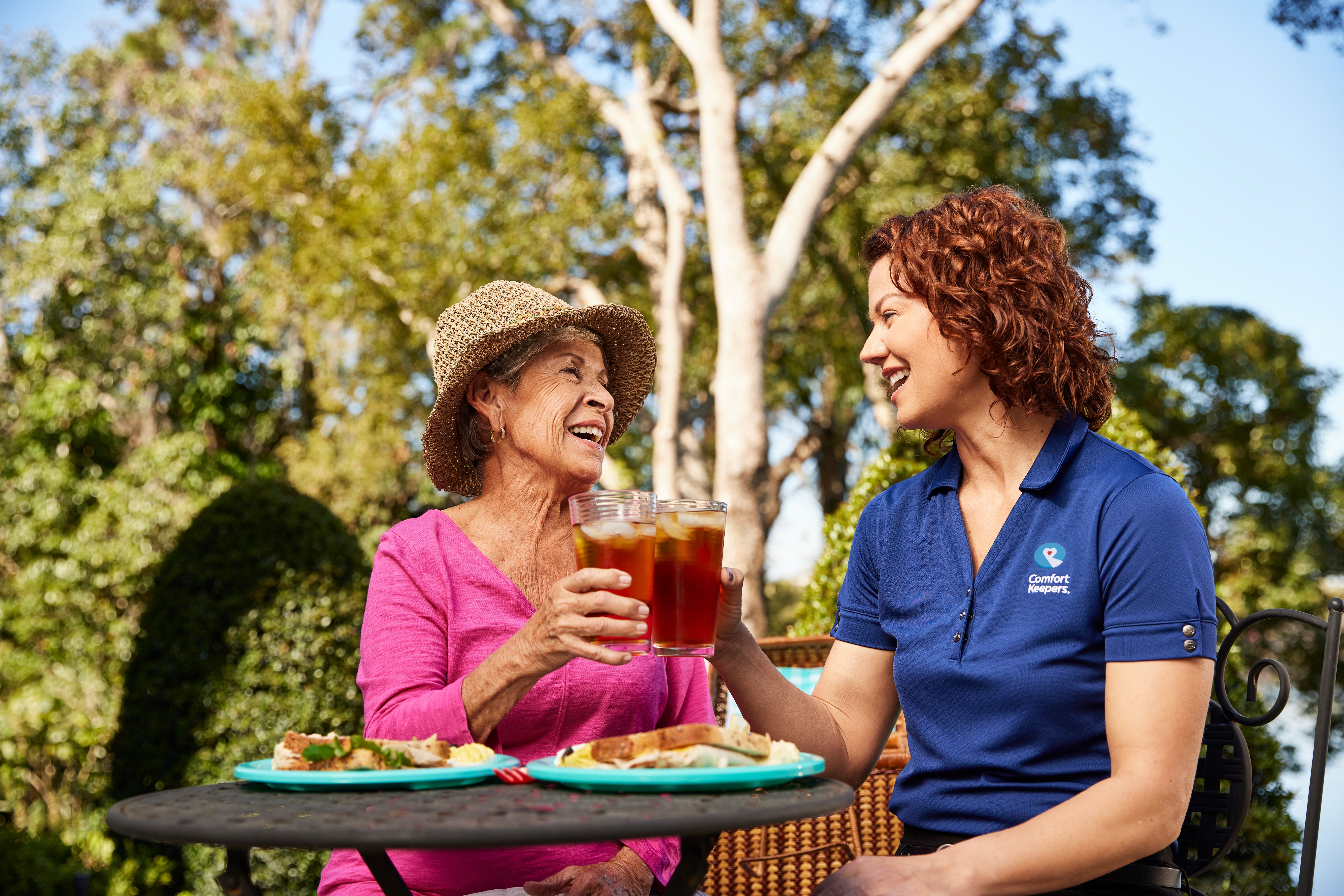Skin Cancer Types: Prevention, Detection and Treatment For Toronto’s Seniors
Senior Health and Wellbeing | May 10, 2017
According to the Canadian Skin Foundation, over 80,000 cases of skin cancer are diagnosed in Canada each year.
As the weather warms up we naturally want to go outside and enjoy the sun and warmer temperatures. Nothing feels better than warm rays of sunshine on your cheeks after a long Canadian winter. While some sun is required and encouraged for Vitamin D production, too much sun can have bad if not deadly consequences – skin cancer.
Seniors: Skin Cancer Is The Most Common Form Of Cancer
Skin cancer is consistently reported to be the most common form of cancer in Canada. There are more new cases of skin cancer each year than the number of breast, prostate, lung and colon cancers combined. While many are aware of the three types of skin cancer – basal cell carcinoma, squamous cell carcinoma, and melanoma – the actual development of skin cancer may not be as well known. Below you will learn how skin cancer forms, the differences between the three types, and how your aging loved ones can identify and reduce the risk of skin cancer.
Senior Skin Cancer Types
The outer-most layer of our skin, known as the epidermis, is composed of three cells: squamous, basal, and melanocytes. Over time, as ultraviolet rays (from the sun or artificial sources like tanning beds) come into contact with the skin, DNA within the skin cells can become damaged, resulting in mutations. These mutations can then cause skin cells to multiply in quick succession, eventually invading the dermis layer of the skin. The classification of skin cancer depends solely on the epidermal skin cell from which it originated.
Basal cell and squamous cell carcinoma, two very common types of skin cancer, are considered highly curable and have been linked to those who spend a considerable amount of time outside and thus are frequently exposed to the sun. Melanoma, though less common, is recognized as more serious and potentially life-threatening. Resulting from the rapid growth of the aforementioned melanocyte cells, melanomas tend to manifest as red, brown, or pink mole-like formations or even form moles themselves.
For men, melanoma generally develops on the head or neck, and for women, it is often found on the legs, arms, or other extremities. That being said, melanoma can certainly develop in other areas of the body (wherever melanocytes are found), including the mouth, eyes, and even the gastrointestinal tract. Unlike squamous and basal carcinoma, melanoma is seen largely in those who have experienced sunburns from excessive exposure to the sun’s UV rays.
Tips On Identifying Melanoma in Seniors
Although the three types of skin cancer are generally considered curable if detected early enough, the possibility of early detection is largely contingent upon one’s own self-examination. To help with identification of melanoma-related areas, the American Academy of Dermatology has created an easy and helpful system. If your aging loved one is concerned about a particular mole or series of moles, help him or her follow the ABCDE’s of melanoma.
- Asymmetry: If you were to draw a line right down the middle of the mole and both sides looked the same (or symmetrical), there’s a good chance it is benign. If, however, the two sides don’t match (or are asymmetrical), it could be a melanoma.
- Border: Pay close attention to the border of the mole. Benign moles generally have smooth borders, while melanomas have irregular or notched borders.
- Color: Another warning signal is if the mole has more than one color, including multiple shades of brown, black, or tan. Additionally, melanomas may become red or blue in appearance.
- Diameter: While benign moles are smaller in size, melanomas tend to be about ¼ inch or larger (or about the diameter of a pencil eraser).
- Evolving: Many of the characteristics listed above may change over time for a mole, in which case you will want to monitor closely. If other changes develop – such as itching, crusting, or bleeding – it could also indicate a melanoma.
Reducing Seniors’ Risk For Skin Cancer
As mentioned previously, older adults – those 65 years of age or older – are more likely to develop skin cancer than any other age group. The correlation behind this is not complex; seniors have lived longer than others and have had greater exposure to the sun’s UV rays. However, with some extra precaution, seniors can reduce their overall risk of skin cancer. Below are a few helpful tips.
- Avoid tanning beds altogether.
- Use effective sun block (at least SPF 15).
- Avoid going outside between the hours of 10am and 4pm, if possible.
- Wear proper clothing (hat, sunglasses, light, loose-fitting shirts) to protect against UV rays.
- Find shade whenever possible.
- Examine your skin regularly (following the ABCDE’s), and follow up with a medical professional, if you suspect there may be a problem.
Comfort Keepers® Can Help
Our caregivers can establish a daily routine for your aging loved ones, to ensure that they are following the risk reduction tips above and keeping their skin protected from the sun’s UV rays. We can also help them get to any scheduled medical appointments, safely and on time. Call your local Comfort Keepers® office to learn more about our unique style of in-home care.
Comfort Keepers®’ trained caregivers help provide senior clients with the highest quality of life possible to keep them happy and healthy at home. Our Interactive Caregiving™ provides a system of care that addresses safety, nutrition, mind, body, and activities of daily living (ADLs).
For additional information on Comfort Keepers of Canada® at Toronto or any other Comfort Keepers of Canada® location please visit our home page or call us at 416-663-2930.
References:
- Skin Cancer Foundation. “The Sun Keeps Rising: Why Seniors Can’t Skip UV Protection.” Web. 2016.
- NIH Senior Health. “Skin Cancer.” Web. 2017.
- Web MD. “Understanding Skin Cancer – The Basics” Web. 2017
- Canadian Skin Cancer Foundation. “About Skin Cancer.” Web. 2016.
Individualized Home Care Options
Long-Term Home Care, 24 Hour Home Care & Short Term Care Options Customized for You






